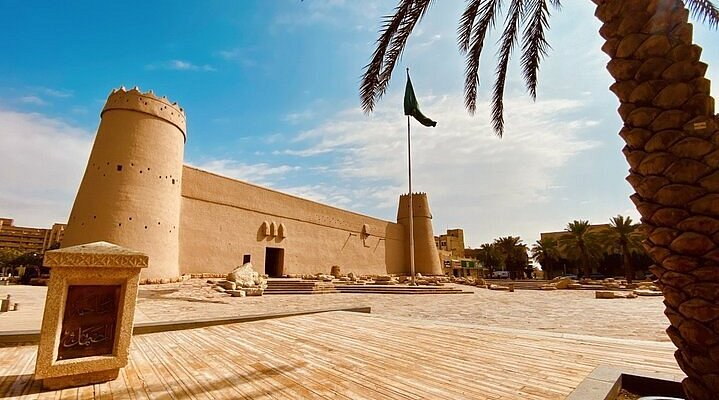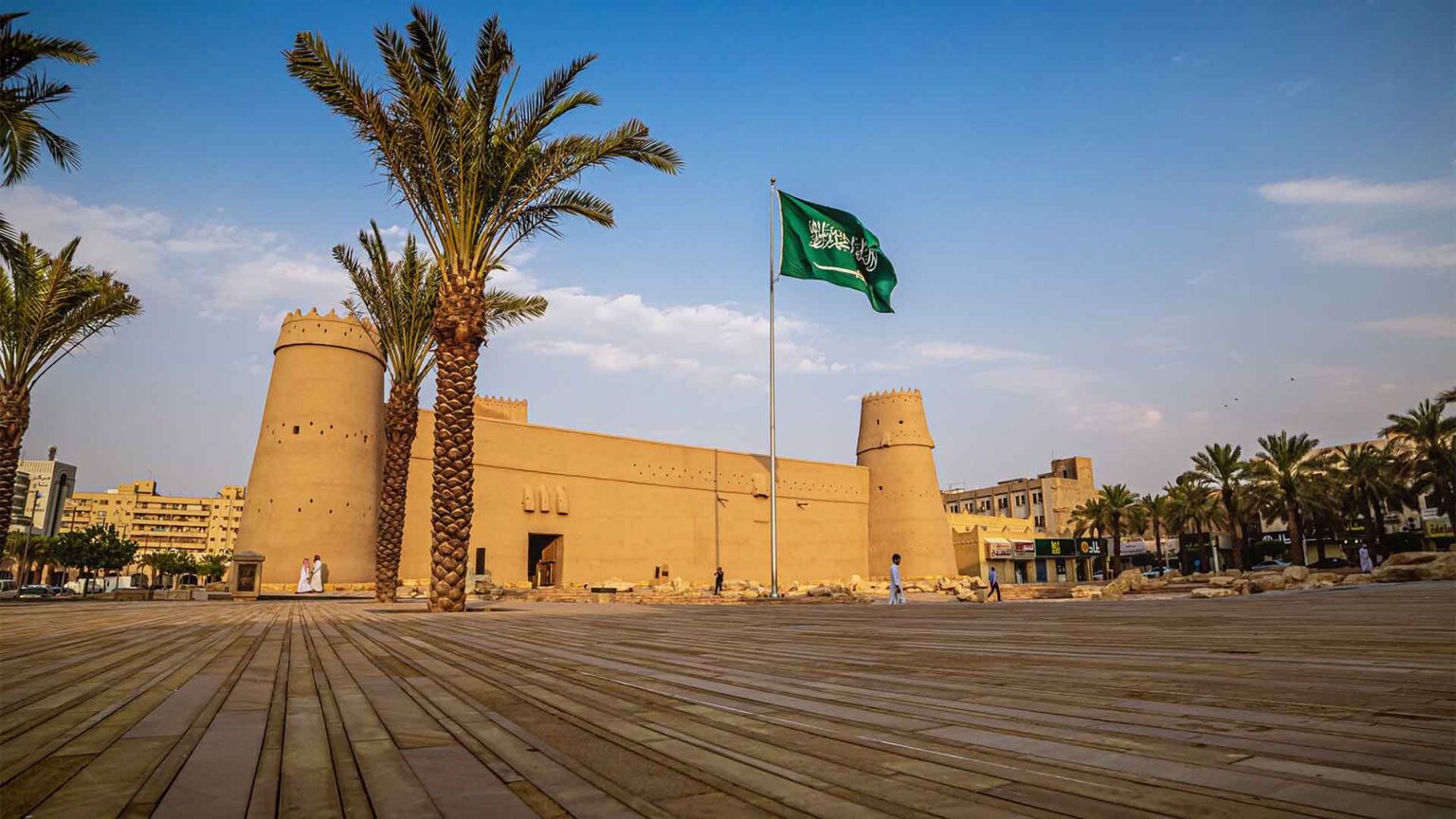Al Masmak Palace Museum stands as a proud emblem of Saudi Arabia’s journey to unification, rooted in history yet alive with emotional resonance. Nestled in the heart of Riyadh, this sturdy fortress witnessed the fateful 1902 recapture of the city by King Abdulaziz, a turning point that paved the way for the Kingdom we know today. Though time has marched on, the strong walls, wind towers, and desert-hued courtyards still whisper the tales of ambition, perseverance, and national rebirth.
Visitors stepping into Al Masmak today do more than explore bricks and battlements: they engage with a story of extraordinary courage. From the narrow passageways where King Abdulaziz fought to reclaim his ancestral capital, to the grand courtyard where the realisation of unity was ignited, every corner conveys emotion, symbolism and deep identity. The museum breathes life into these memories with authentic exhibits uniforms, weapons, maps, portraits and immersive storytelling that turns history into a personal experience.
Years after the recapture, the palace became symbolic of a nation’s resolve. The unification effort wasn’t a single victory; it was the foundation of modern Saudi Arabia. King Abdulaziz’s vision extended far beyond the walls of Riyadh, forging alliances, honouring traditions, and creating institutions. Al Masmak, once a defensive fortress, now holds the memory of a leader’s bold spirit and invites the world to witness the heart of his mission.
The Storied Fortress: History and Restoration
Constructed in 1865 from traditional mud brick and coconut timber, Al Masmak reflects the architectural genius of Najd, designed for security and climatic survival. Its thick walls shielded inhabitants from harsh desert heat and attack. Yet despite its utilitarian construction, the fortress housed the hopes of a rising leader who dared to reclaim a fragmented land.
After King Abdulaziz’s legendary night raid in January 1902, Al Masmak became the epicentre of an awakening. Through the decades, modernisation threatened its original form. But by the late twentieth century, restoration efforts transformed Al Masmak into a museum while preserving its soul. Craftsmen replicated traditional patterns, painted original tones, and retained the fortress’s authentic proportions. Today, the structure breathes as it did over a century ago, humble, weathered, yet steadfast.
Traversing the Courtyard: Where History Unfolded
Stepping into the broad central courtyard is like stepping into a turning point in time. Here, King Abdulaziz first gathered supporters after the conquest. The open skies overhead, the rugged flooring, the shaded arcades, each detail invites visitors to reflect on that pivotal moment: Riyadh reclaimed, a leader affirmed, and a unification dream realised.
The courtyard often hosts live reenactments and cultural events, grounding the palace not just in history, but in living tradition. Traditional Najdi dances, music performances, and storytelling sessions breathe fresh energy into the atmosphere. Families, school groups, and curious worldwide travellers witness firsthand how the past continues to shape collective identity.

Exhibition Halls: Artifacts that Speak Volumes
Within the palace’s interior rooms, richly curated exhibits chart King Abdulaziz’s ascent from tribal prince to founder of a kingdom. Displays include his modest saddle, early firearms, handwritten correspondence, tribal maps, and portraits of key figures. Each piece is accompanied by engaging narratives: how alliances were forged, how battles were won, and how a fragmented peninsula began its journey toward unity.
The weaponry section, for instance, carries not only tools of war but stories of strategy and belief. The maps show not only shifting territorial lines, but the complexity of tribal and political negotiations. Visitors leave with more than facts; they leave with a sense of the human resilience and visionary leadership that shaped an entire nation.
Emotional Connection: Stories of People and Place
What sets Al Masmak Museum apart is the way it humanises the grand narrative. Visitor testimonials speak of quiet moments spent gazing at a dusty helmet or a tattered flag, and feeling a sudden emotional tug toward a past imagined. Saudi youths, hearing about their nation’s formative chapters, find pride and inspiration. International guests discover how cultural identity and national aspiration can intertwine so powerfully.
The museum includes personal stories: a soldier’s recollection, a tribal elder’s account, a woman’s memory of life during early unification. These small voices add depth and repeatability. The museum doesn’t simply honour King Abdulaziz, it honours everyone who contributed, who believed, who persisted.
Engaging Visitors: Interactive and Immersive Experiences
Beyond static displays, Al Masmak draws visitors into the past through interactive exhibitions. Digital touchscreens allow you to explore maps of expansion, trace trade caravans, or learn about tribal treaties. Virtual reality stations simulate the palace during the pivotal night raid. An audio visual theatre presents documentaries in Arabic and English, weaving poetic narration with archival imagery.
These elements ensure the museum doesn’t feel like an encyclopedia, it feels like a living narrative voiced by the very heart of Saudi Arabia’s origins. Visitors don traditional clothing, handle replicas of historical arms, and experience the sensory world of early 20th century Najd. The result is not just education, but immersion.
Cultural and Educational Significance
Al Masmak Palace Museum stands at the intersection of culture and education. Local schools schedule regular field trips so students can absorb their national history firsthand. University researchers access archives and oral histories. International tour groups incorporate it in cultural heritage trails through Riyadh.
For Saudi citizens, the museum symbolises more than history, it embodies unity, national identity, and continuity between past and present. For global visitors, it offers profound insight into how a kingdom emerged from desert sands and tribal landscapes through the vision of one charismatic leader.
Preserving Unity: Legacy and Ongoing Relevance
In an age of rapid change, Al Masmak Palace remains a reassuring anchor to collective memory. Ongoing preservation efforts ensure that the building’s material integrity is safeguarded. Meanwhile, programming expands to explore the stories of lesser known contributors, tribal negotiators, female figures, rural communities. As Saudi Arabia evolves, so too does the narrative the museum shares.
Annual national celebrations include ceremonies at the palace, reaffirming its role as a symbol of unification. Special exhibitions commemorate milestones such as the 1902 recapture, the founding proclamation in 1932, and the ongoing societal transformation that followed.

Visiting Today: Practical Information and Visitor Experience
As of 2025, Al Masmak Palace Museum welcomes visitors most days of the week, with extended hours during cultural festivals and the National Day in September. Guided tours in multiple languages Arabic, English, French, Spanish are available, and audio guides enhance self guided visits. The entrance courtyard café offers traditional Saudi refreshments, date coffee, almond sweets, mint tea, encouraging reflection after touring the rooms.
A shop at the exit sells beautifully crafted souvenirs: miniature fortress models, books on unification, Bedouin style textiles, and local art pieces tied to Saudi heritage. Many visitors choose to linger in the courtyard afterwards, capturing photos in traditional dress or joining cultural performances.
Impact on National Pride and Tourism
Al Masmak Palace Museum plays a vital role in strengthening national identity. Its story is taught in schools, shared during patriotic celebrations, and featured in media narratives. It helps Saudis of all ages see their history as one connected journey, and link personal identity to a broader national tapestry.
Touristic ally, the museum anchors Riyadh’s historical district. It attracts visitors who also explore adjacent souqs, traditional residences, and contemporary cultural centers. Many international tourists say visiting Al Masmak was the highlight of their Saudi experience, it’s where history becomes personal, legend becomes lived experience.
Future Vision: Continued Relevance and Expansion
Looking forward, the museum plans further enhancements. Augmented reality features will overlay historical scenes onto present day views of the palace. Oral history projects will record more contributor voices, expanding exhibits to include diverse perspectives. Collaborations with global historians and architects will bring innovation to exhibitions while preserving authenticity.
Educational outreach aims to translate exhibits into additional languages, expand online virtual tours, and build programs for youth both inside and outside Saudi Arabia. The hope is to share the story not just with visitors, but with Saudis living abroad and newly interested global audiences seeking insight into Arabia’s path to unity.
Final Reflections: Fortress That Became A Nation’s Heart
Al Masmak Palace Museum stands as more than heritage architecture. It’s a living testament to human resolve, effective leadership, and the power of unity. The moment King Abdulaziz seized its gates in 1902 might have been brief, but the impact rippled across deserts, tribes, and generations, ultimately shaping a national identity.
Walking its halls, you sense the weight of centuries, the sparks of revolution, and the steady pulse of a kingdom’s dreaming heart. The exhibits don’t just inform, they inspire: reminding visitors that single acts of daring can ignite collective destiny. That humble beginnings in wind beaten courtyards can lead to modern prosperity and global relevance.
Al Masmak Palace Museum preserves the story of unification not as distant history, but as a living, breathing legacy. It humanises the grand narrative of nation building by showing the ordinary people, the chance alliances, the grit in the sand, and the vision that re imagined a fragmented land into a unified kingdom. For all who pass through its gates, it offers a moving reminder: unity isn’t given, it’s earned, remembered, and celebrated across time.
Do follow Gulf Magazine on Instagram.
Also Read – Saudi Main Index Surges to 10,956 Boosting Investor Confidence



